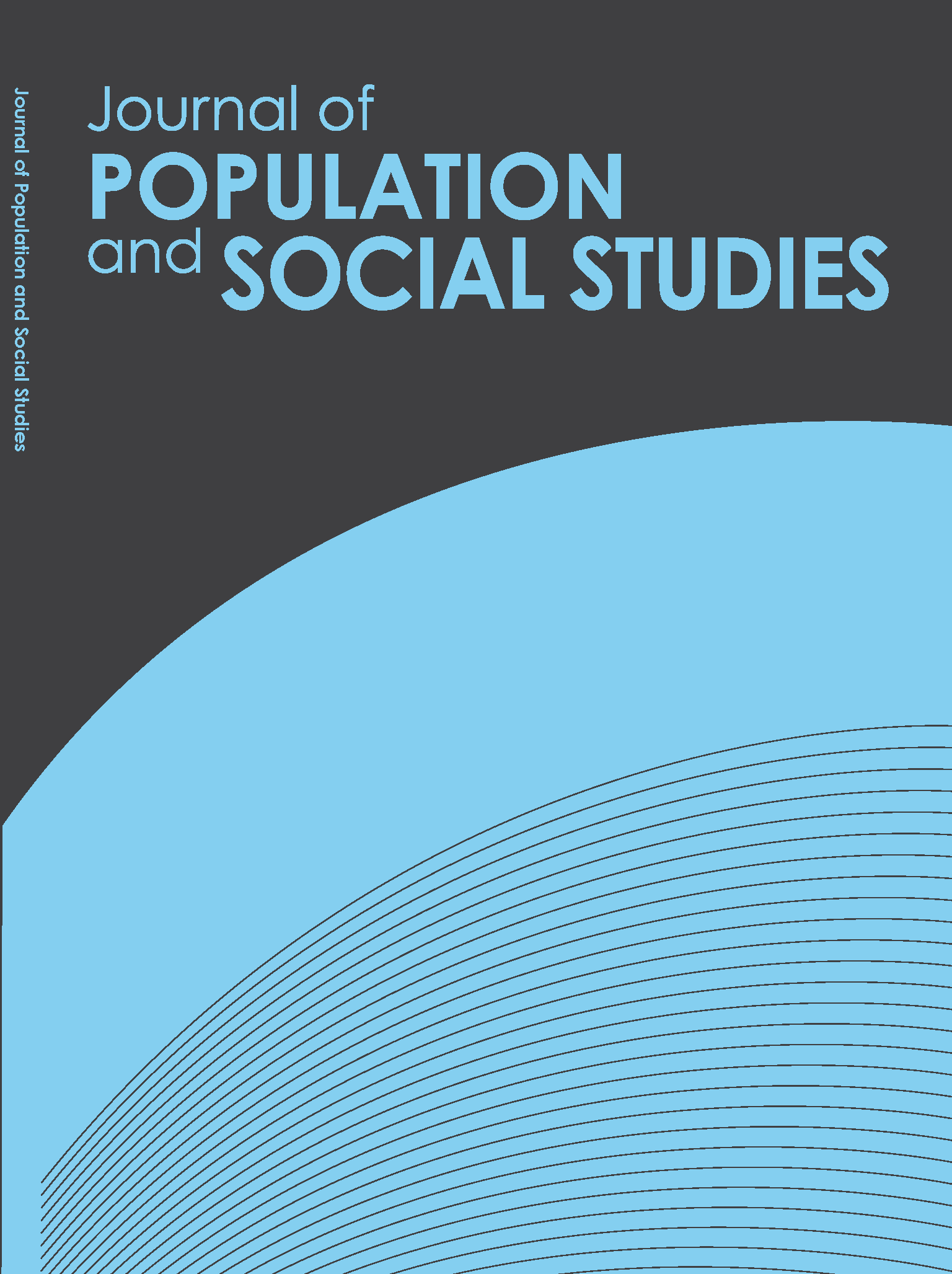Traversing the Laws: The Unregulated Movement of Filipino Migrants in Thailand
Main Article Content
Abstract
Despite policies that provide a legal framework for controlling foreign labor, Thailand continues to experience an increasing trend of both unskilled and skilled labor migrants from neighboring countries. This can be attributed primarily to labor and skills shortages in the country. For the last five years, Thailand has a growing stock of Filipino migrants, and a sizeable number of them are working without a proper work permit. This study investigates and sheds light on the trends in the movement of Filipinos working in Thailand. It focuses on factors facilitating their movement and the various resources employed by migrants to remain in the country. Findings from a survey of 354 Filipino migrants in various provinces and at the Thailand-Cambodia border, as well as from in-depth interviews with 25 migrants are presented. The findings reveal that most Filipino migrants are highly skilled and well educated, and that they tend to come from certain regions and ethnicities in the Philippines. New patterns of mobility and different paths enabling Filipinos to work and remain in Thailand are revealed; many migrants switch between regular and irregular status, taking advantage of various mechanisms and resources in the process.
Article Details
References
Ajzen, I. (1991). The theory of planned behaviour. Organizational Behaviour and Human Decision Processes, 50, 179-211.
Asis, M.M.B. (2004). Borders, globalization and irregular migration in Southeast Asia. In A. Ananta and E. Arifin (Eds.) International Migration in Southeast Asia (pp. 199-227). Singapore: Utopia Press.
Asis, M.M.B. (2005). Recent trends in international migration in Asia and the Pacific. Asia-Pacific Population Journal, 20(3), 15-38.
Battistella, G. (1999). Philippine migration policy: dilemmas of a crisis. Journal of Social Issues in Southeast Asia, 14(1), 229-248.
Battistella, G. & Asis, M.B. (Eds.) (2003). Unauthorized migration in Southeast Asia. Quezon City: Scalabrini Migration Center.
Blakewell, O. (2007). Keeping them in their place: The ambivalent relationship between development and migration in Africa. International Migration Institute (Working Paper No. 8).
Carling J. (2002). Migration in the age of involuntary immobility: theoretical reflections and Cape Verdean experiences. Journal of Ethnic and Migration Studies, 28, 5-42.
Castles, S. (2000). International migration at the beginning of the twenty-first century: global trends and issues. International Social Science Journal, 165, 269-281.
Chandoevwit, W. (2012). The impact of the global financial crisis and policy responses in Thailand. TDRI Quarterly Review, 25 (1), 12-24.
Cvajner, M., & Sciortino, G. (2010). A tale of networks and policies: Prolegomena to an analysis of irregular migration careers and their developmental paths. Population, Space and Place, 16(3), 213-225.
Drachman, D. (1992). A stage-of-migration framework for service to immigrant populations. Social Work, 37(1), 68-72.
Filipino Typhoon Relief 'Scammers' Arrested (2013, November 22). Khaosod English. Retrieved from http://www.khaosod.co.th/en/view_newsonline.php?newsid=TVRNNE5URXdNemM1TkE9PQ==
Huguet, J. and Punpuing, S. (2005). International migration in Thailand. Bangkok: International Organization for Migration.
International Organization for Migration. (2010). World Migration Report 2010. The future of migration: Building capacities for change. Switzerland: International Organization for Migration.
Kaur, A. (2007). International labour migration in Southeast Asia: governance of migration and women domestic workers. Intersections: Gender, History and Culture in the Asian Context. Retrieved on September 2012 at http://intersections.anu.edu.au/issue15/kaur.htm
Kaur, A. (2010). Labour migration trends and policy challenges in Southeast Asia. Policy and Society, 29, 385–397.
Kley, S. (2010). Explaining the stages of migration within a life-course framework. European Sociological Review. 27(4), 469-486.
Kley, S. (2009). Explaining migration as a process of cumulative causation in the life course (Migremus Working Papers No. 2/2009). Retrieved and accessed on 2012/02/01 from http: // www.migremus.unibremen.de/images/stories/workingpapers/kleywp.pdf
Koser, K. (2005). Irregular migration, state security and human security. A paper prepared for the Policy Analysis and Research Programme of the Global Commission on International Migration. Global Commission on International Migration.
Krenn, M. & Haidinger, B. (2008). Un(der)documented migrant labour – characteristics, conditions and labour market impacts. Thematic report prepared under the theme ‘Migration flows and labour market impacts’. EU Sixth Framework Programme (UWT).
Kubal, A. (2012). Conceptualizing semi-legality in migration research. (IMI Working Papers Series No. 58/ 2012).
Mayer, K.U. (2004). Whose lives? How history, societies and institutions define and shape life courses. Research in Human Development. 1, 161-187.
Ministry of Labour. (2012). Statistics on Filipino employment in Thailand. Bangkok: Department of Employment, Ministry of Labour.
Pajares, M. (2008). The relationship between status and migration transitions. Undocumented Worker Transitions. EU Sixth Framework Programme, No. 044272. Retrieved from http://www.undocumentedmigrants.eu/library/j12442_3.pdf
Parreñas, R. S. (2001). Servants of globalization: Women, migration and domestic work. Palo Alto, CA: Stanford University Press.
Perrochoud, R. & Redpath-Cross, J. (Eds.). (2011). Glossary on migration,2nd edition. Geneva: International Organization for Migration.
Philippine Overseas Employment Administration (POEA). (2010). Annual Report, 2010.
Philippine Overseas Employment Administration (POEA). (2011). Annual Report, 2011.
Sarausad, M.R. (2003). Crossing Boundaries: The dislocations of Filipina domestic workers in Thailand. Unpublished MSc. Thesis, Asian Institute of Technology, Thailand.
Sarausad, M.R. (2013). Understanding the contemporary Filipino migration in Thailand. Unpublished Ph.D. thesis, Mahidol University, Thailand.
Scalabrini Migration Center (SMC). (2005). Preparing to work abroad. Filipino migrants’ experiences prior to deployment: A research project. Philippine Migrants Rights Watch.
Sheraden, M.S. & Martin, J.J. (1994). Social work with immigrants: International issues in service delivery. International Social Work. 37, 369-384.
Sjaastad, Larry. (1962). The costs and returns of human migration. Journal of Political Economy, 70(5), 80-93.
Tervo, H. (1998). Post-migratory employment prospect: Evidence from Finland. 38th European Congress at the European Regional Science Association, Vienna.
Wickramasekera, P. (2002). Asian labour migration: Issues and challenges in an era of globalization. International Migration Papers. Geneva: International Labour Organization.


